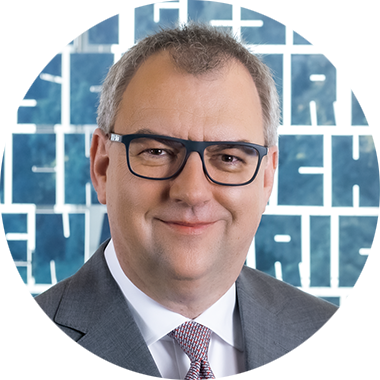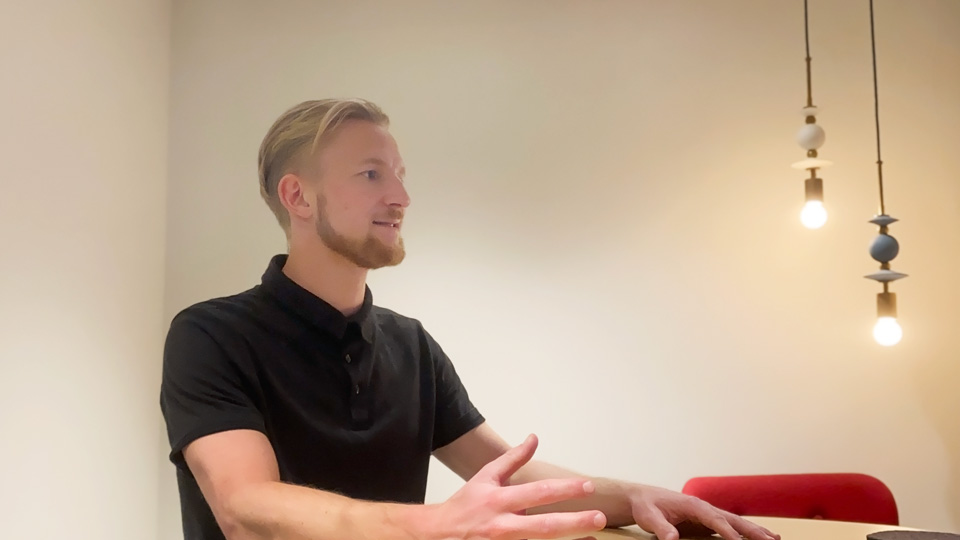Representatives of Europe’s top universities regularly complain that their most talented students leave Europe within a few years, taking their spin-offs and start-ups overseas. They do this because the conditions for expansion and internationalisation in Europe aren’t as attractive for their innovative ideas in technology’s fields of the future. The fruits of a European education are being harvested in America and Southeast Asia, with all of the negative consequences for the development and continuation of intellectual capital which are indispensable for a competitive industry location.
This selling off of top European technology and the brain drain that accompanies it has well-known structural causes. For one, there is a major difference between the US and Europe when it comes to the availability of venture capital for aspiring innovators, above all in the growth and consolidation phase.
Study proves US dominance in tech shopping
A joint report by the consulting firm PwC and the market analysts at CB Insights identified 605 rounds of financing in the first months of 2017 in Europe, resulting in an investment of $3.3 billion. During the same period, $14.3 billion in venture capital was invested in North America and $9.3 billion in Asia. Venture Capital Funds in Europe have an average size of €56 million; American funds have almost three times as much funding, with an average size of €156 million. In the private venture capital market for start-ups, the ratio is even 1:6 (€6.5 to €39.4 billion).
The US, especially Silicon Valley, has long recognised that the right acquisitions in the start-up exit market are the easiest way to ensure a leading position in technology against upcoming market and product disruptions; European industry and its successful traditional firms are only slowly beginning to wake up to this fact. Here are some more figures and examples for the US shopping sprees in the European tech market:
Mind the Bridge, member of the Startup Europe Partnership, and CrunchBase have observed about 6,000 start-up exits in the US and Europe since 2012 in their report, “Startup Transatlantic M&As – US vs. EU”. US firms account for 82% of all acquisitions, and European firms only 18%. The share of American tech-shoppers in Europe amounts to 44%. Among the top 15 shoppers, 11 were from Silicon Valley. The first European company to appear in this ranking was SAP from Germany, in 33rd place.
Apple prefers mostly to buy AI
In 2017, Apple got itself into shape for new developments in various AI fields in the European start-up market. Acquired companies included Beddit of Finland (sleep tracking), SensoMotoric Instruments of Germany (eye tracking for augmented reality and in-car technologies), Regaind of France (computer vision API to extract features for photo analysis) and, for $400 million, Shazam from the UK, the music recognition technology downloaded a billion times by customers and capable of recognising over 30 billion songs.
And Facebook, Alphabet/Google, Microsoft, Amazon and Snap were all on a par with their US competitor. Since Israel is also a global leader in artificial intelligence, Americans also stopped by there during their shopping spree. Mobileye, a vision safety technology for autonomous driving, was sold for $15.3 billion to Intel.
Europe slowly catching up
The times for shrewd start-up support are slowly improving in Europe. For example, equity funding in Europe in 2017 increased to €25 billion, which was a 500% increase over 2012.
It is now important to raise awareness in the European Union that the rapid sale of European start-up solutions to overseas companies cannot continue to be the first choice for exit strategies. To this end, we must convince traditional industrial companies in Europe that participating in creative and successful young companies creates a win-win situation for both. With their size and capital resources, traditional firms can accelerate the growth of start-ups in the maturation phase and at the same time enrich their own product portfolio with new, intelligent and sustainable features, thus securing long-term competitiveness. Secured financing will free up the start-ups for ongoing product development and market cultivation.
This, however, requires a completely new business culture that would overcome the usual risk-averse market cultivation of larger companies in favour of an intra-European technology transfer.
With its recent acquisition of 60% of the shares in Munich-based Xpublisher GmbH, Fabasoft has demonstrated what a successful European industrial and start-up strategy could look like. This is the second time – the first being the search technology company Mindbreeze – that we have provided a young company with growth capital so that it can make the next development leap with its successful system solutions for digital content management using our experience and our market contacts.
However, further measures are needed to strengthen the European start-up scene, such as the expansion of start-up hubs in many cities, including medium-sized ones, and primarily those which, have been abandoned by industry and now urgently need to be repositioned as innovative trading centres. Here, too, it is worth taking a look across the ocean, where Detroit has set an example of how a region in crisis can be revitalised with an orientation towards the future.
Keep the staff in mind too
Although the European tech workforce grew threefold in 2017, European start-ups will need 100,000 talented employees again this year. Since the European start-ups in this “war for talent” often cannot keep up with their US competitors in terms of salary offers, one way out could be stock option programmes. Therefore, at the beginning of the year, over 700 CEOs, founders, investors and employees of European start-ups wrote an open letter to political leaders in Europe calling for a revision of the often disadvantageous rules governing the acquisition of shares by employees. This is particularly relevant in view of the fact that US investors often lure development teams out of European start-ups without being interested in the company's products.
Finally more European venture capital
One thing I am rather proud of is the fact that a European IT Foundation I proposed in my book in 2015, based on the model of the EBRD (European Bank for Reconstruction and Development) or the EIB (European Investment Bank), was implemented in a similar form by the EU Commission in 2017.
“VentureEU” was created to provide venture capital for innovative European start-ups. VentureEU is a fund of funds led by the European Investment Fund (EIF). The EU is providing a total of €410 million investment capital from the instruments Horizon 2020 InnovFin Equity (€200 million), the European Fund for Strategic Investments (€105 million), and the COSME Programme for SMEs (€105 million). Through the due diligence selection of six funds, each of which must operate in at least four European countries, the EIF is expected to generate around €2.1 billion through private investors. Overall, however, the Commission assumes that the VC funds will trigger an investment volume of €6.5 billion for the future sectors of digitisation, life sciences, medical technologies, and resource and energy efficiency.
This trend shows that politics is a bit like drilling through thick boards. And European boards are particularly thick. But it’s worth it!




